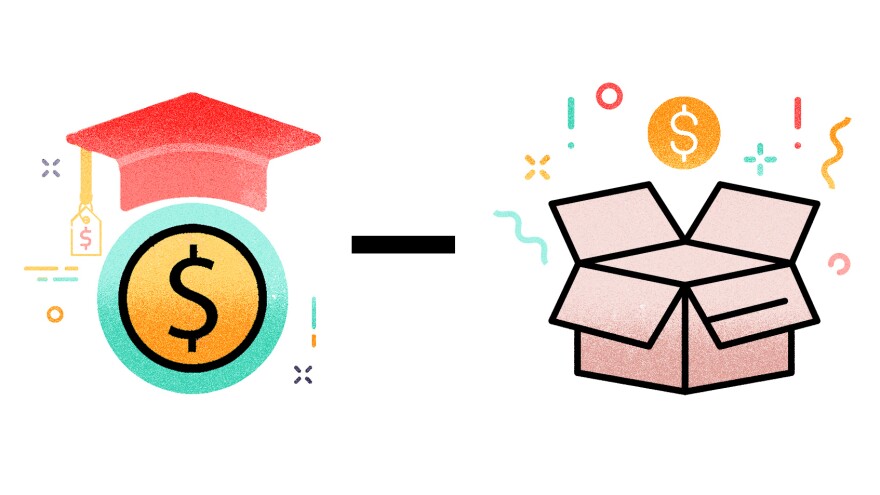Right now, students across the country are in the process of choosing where to go to college. For many, that decision is closely tied to a school's financial aid offer. But with no current standardization of these offers, letters look vastly different from one college to the next. They're often filled with confusing terms and jargon, and not all colleges define and calculate these terms the same way. Here are some general definitions to help students and their families navigate the process. (Editor's note: To clarify how a particular school is using these terms, reach out to its financial aid office.)

Cost of Attendance (COA)
Total estimated price for one year of college before financial aid is applied — or, direct costs plus indirect expenses (see below). Includes tuition and fees, housing, food and other additional personal and educational expenses.

Direct Costs
Money paid directly to the college — essentially, what shows up on a student's bill. That includes tuition and fees, and the housing and meal plan, if applicable.

Indirect Expenses
Estimated additional personal and educational expenses needed throughout the academic year. That includes books, transportation and living expenses, such as rent and food, if living off campus.

Net Costs
Remaining costs for one year of college after grants and scholarships are applied — or, COA minus gift aid (see below).

Estimated Bill
The anticipated amount you will need to pay directly to the college in order to enroll after gift aid and loans (see below) are applied — or, direct costs minus gift aid minus loans. Additional personal and educational expenses are not included.

Gift Aid
Grants and scholarships that you do not need to pay back. Each grant and scholarship may have specific requirements to maintain eligibility and/or to renew. Occasionally, students might have to pay back part or all of a grant if, for example, they withdraw from school before finishing a semester.

Self-Help Aid
Unlike gift aid, self-help aid is earned, borrowed or acquired using a combination of the two. It can be earned through work-study (see below) and borrowed through loans (see below).

Loans
Borrowed money that must be paid back, with interest. Students can choose to reduce or decline the amount offered.

Federal Direct PLUS Loans
There are two types of Federal Direct PLUS Loans. The first, a parent PLUS Loan is a federal loan for parents of undergraduate students, which requires credit approval. If approved, parents could be eligible to borrow the amount of a student's remaining costs. The second, a grad PLUS Loan, is for graduate students and also requires credit approval.

Federal Pell Grants
A federal grant for low-income undergraduate students who have not yet received a bachelor's degree. This does not have to be repaid.

Work-Study
Students are eligible to earn up to the amount listed after securing a work-study job through their college. The money earned is not typically available to pay their college bill; students are paid directly via a paycheck for the hours worked.

Expected Family Contribution (EFC)
This is the number schools use to calculate how much financial aid students are eligible to receive, if any. It's based on the financial information students provided in their Free Application for Federal Student Aid, or FAFSA. It's not the amount of money a student's family will have to pay for college, nor is it the amount of federal student aid being offered. The family contribution is reported to students on their Student Aid Report, also known as the SAR.
Icons created by LA Johnson/NPR with help from The Noun Project. Definitions adapted from the uAspire/New America report Decoding the Cost of College.
This story was produced with support from the Education Writers Association Reporting Fellowship program.
Copyright 2021 NPR. To see more, visit https://www.npr.org. 9(MDIwMjIxMDA0MDE0Mzk4NDIzNjA0OGQ5Yg001))


